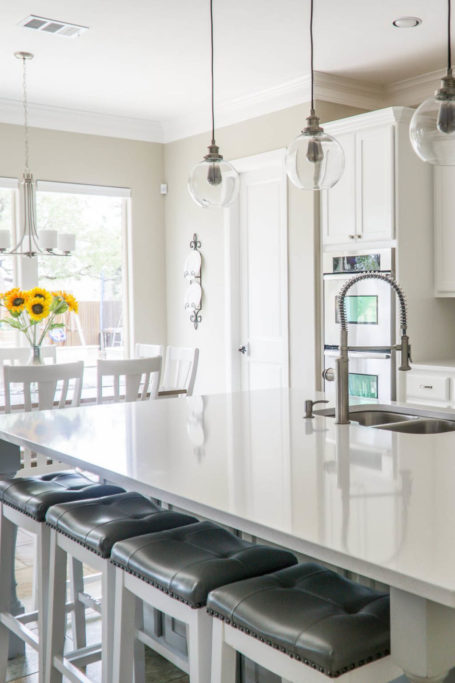Where Boutique and Home Workouts Collide
When you step into a boutique-style workout studio, you’re met with bright decor, upbeat instructors who are there to motivate you, and a team of exercisers dedicated to their health and fitness journeys.
Working out used to be anything but glamorous, but it has slowly become a luxury experience rather than a chore. Studios are opening up across the country that offer yoga, spin classes, barre, HIIT (High Intensity Interval Training), cardio, and more. Exercisers look to these classes for motivation and discipline. However, as people become increasingly busy, how can they reconcile the desire for a boutique-style workout with their ever-changing schedules? We talked to Les Mills Marketing Specialist Amanda Tjarks and learned that their company has the answer.
The boutique workout takeover
Although workout studios have been around for decades, boutique studios are relatively new. Your typical exercise studio and a boutique studio are vastly different because of the holistic approach that boutique studios take in their clients’ experiences. Unlike a regular gym membership or workout studio, clients of boutique studios typically strongly identify with their exercise routines. Boutiques are usually franchises—ranging from regional to national. Many offer celebrations for their clients’ milestones, like taking 500 classes.
Often, memberships for boutique studios are more expensive than regular workout studios. Though some may argue that boutique studios are an unnecessary expense when you could just run every day for free, there is something to be said for the motivation that these workout programs provide. Boutique workout studios often help people build social groups and offer mental health benefits beyond those you reap from typical workouts. If you have friends at your workout studio who you exercise with regularly, you start to feel like you’re a part of a team working toward a common goal. This can get you out of bed and into the studio on days when you’d rather take a little extra time to sleep. Plus, you’re less likely to skip out on workouts if you have friends who frequent the studio and will call or text you to keep up with your workouts. Also, instructors are trained to motivate exercisers, often leaving the class with inspiring messages that can carry everyone through the workout and whatever challenges the day or week may present.
Though the company itself has been around for over 50 years, Les Mills has evolved over time and has taken a cue from the growing trend of boutique studios. They’ve also taken steps to ensure that timing doesn’t inhibit their clients from fitting Les Mills workouts into their schedules. Les Mills is part of a workout revolution that understands the widespread love of boutique workouts while also acknowledging that most people live busy lifestyles. They accommodate both these needs simultaneously, in a way that fitness companies across the world can learn from.
The origins of Les Mills
Les Mills began in Auckland, New Zealand, in 1968. It was a small, simple gym that Les Mills, the founder and namesake, operated with his son Phillip, who worked at the gym part time after school. When Phillip completed his college career in California and returned to New Zealand, he had a vision in mind, and was ready to dramatically change that small gym into something much greater. During his time in California, Mills watched the trend of aerobics workouts emerge and decided to run with it. He transformed Les Mills and started running group fitness classes complete with upbeat music that drew in huge crowds. Eventually, Phillip and his wife Jackie, a doctor and former gymnast, researched ways to improve the workout classes. They started incorporating weight training into the studio’s workouts, developing the famous BODYPUMP class—a full-body barbell workout for anyone focusing on getting lean and toned.
Les Mills has only grown from there, as there are over 20,000 studios around the world that feature its classes. They’re committed to creating a healthier world and they help contribute to that process by offering workouts appropriate for all ages, genders, body types, and base fitness levels. Les Mills also wants exercise to be an enjoyable experience for their clients. Tjarks explains, “Our mission isn’t just about making the world a fitter place. It’s about inspiring people to fall in love with the fitness journey. We don’t want exercise to only feel like something you have to do, but something you’re passionate about doing.” The company wants people to love exercising itself, rather than results alone.
The Les Mills difference
Most boutique workout studios specialize in one style of workout and capitalize on that. They might focus on HIIT, spin, or weight training, designing all their workouts around the same type of exercise. If exercisers want to achieve more variety in their workouts, they have to seek out other studios that offer different classes or work out at home instead of staying loyal to the niche studio.
Rather than specializing in just one type of workout, Les Mills has virtually every type of workout imaginable. They offer all types of training, including strength, cardio, weight, indoor cycling, 30-minute HIIT, kids’ classes, and more. Two of the most popular are the BODYPUMP and BODYCOMBAT—a non-contact martial arts style workout—classes which deliver the intensity and results that many clients strive to achieve. Every workout is backed with extensive research and scientific evidence of its efficacy. Les Mills aims to help their clients feel passionate about exercising, always ensuring that their workouts are complete with exciting music and an energetic atmosphere.
Responding to our time-constrained world
Although people are becoming increasingly interested in boutique workouts, most are also more pressed for time than ever before. Though boutique workouts are excellent motivators for many people, making them effective because they help people stick to their workout routines, they are also time-consuming. Exercisers have to drive to and from the studio, classes can conflict with work or school schedules, and it can become challenging to fit the longer workout classes into the day.
In response to the challenges people have with attending their studio classes, Les Mills has taken steps to make it easier for people to exercise on their own time. One of the most important aspects of Les Mills is its quality instruction. Each Les Mills instructor undergoes the extensive training necessary to deliver engaging, challenging workouts to their clients. However, Les Mills wants to deliver the same training to clients who cannot always attend classes in person, so it’s developed studio workouts offered as LES MILLS™ On Demand videos. The classes range from 15–60 minutes, so exercisers can choose their workouts based on how much time they have to complete them. Because these workouts are accessible on demand, they allow people to maintain their exercise routine if they need to work out at home because of time constraints, or if they’re traveling and don’t have access to a Les Mills studio.
Differentiating themselves from other at-home workout videos
Of course, workout videos have been around for what feels like ages. However, there’s a difference between following along with a typical workout video and doing one of Les Mills’ On Demand classes. The professional Les Mills instructors record each class, complete with the same music and high energy that clients get when they’re in the studios. If you’ve ever tried to follow a workout app or printable online workout, you know that it’s easy to cheat a little. When you’re in need of a little extra motivation, it’s especially helpful to have the support of a Les Mills trainer encouraging you throughout your workout and holding you accountable.
Another challenge with home workouts is that many people don’t have home gyms stocked with all the equipment necessary to complete various exercises. This leads people to modify their movements, which can take away from the fitness benefits the workout should bring them. Luckily, Les Mills sells equipment, which exercisers can purchase to use during their at-home workouts. “We plan to continue to build a fitter planet by inspiring and reaching more people around the world through immersive workouts, great music, cutting-edge equipment made with innovative technology, and quality accessible digital fitness,” Tjarks says.
Clients can access the workouts online or on their TVs, and the online platform currently offers over 800 different workouts. This is one of the key differences between Les Mills’ home workouts and your typical at-home workouts. If you’ve ever used a workout DVD, you know that it can become incredibly repetitive. It might be exciting the first time to feel like you had a trainer and class in the room with you, but you quickly start to memorize the routine and commentary, even if the disc offers multiple workouts. Les Mills, on the other hand, offers a seemingly endless supply of workouts of all different styles. You’re not sacrificing anything when you have to work out at home because you can’t get to a studio.
With the trend of boutique workout studios, you don’t have to trudge through a morning run by yourself every day if that’s not your favorite way to exercise. You can get a high-energy workout while feeling a sense of belonging and even making new friends. On days when you don’t have time, you’re still not alone. With the ever-changing technological world, boutique studios like Les Mills have made it possible to bring your boutique studio experience right into your home.


















